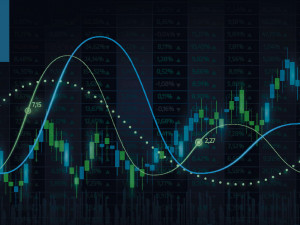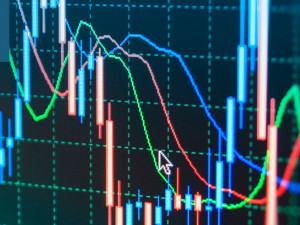
Economy enters uncharted waters
Morning mid-market rates – The majors
1st April: Highlights
- Predictions of Q2 contraction begin
- Biden opens the taps
- Surge in inflation increase ECB’s dilemma
A one quarter contraction most likely outcome
The average household energy bill will increase by around £700 a year with another increase in the energy cap, the most that energy suppliers can charge consumers, set to rise again in October. Today’s rise in the energy cap is set at 54%.
In addition, the conflict in Ukraine is adding to the cost of basic food supplies.
The first quarter of 2022 has ended, with the economy having grown as the effects of the Pandemic have waned, but infections are at a high, but less serious level.
The Bank of England’s actions to stave off inflation will see interest rates rise to 1.50% by the summer, with banks charging more for mortgages.
In a survey conducted by the British Chambers of Commerce, 62% of UK businesses expect to increase their prices during the second quarter as supply of raw materials and spare parts still are challenging and interest costs rise.
The rising cost of energy will see transport costs increase substantially, although this will depend to a large extent on how long the conflict in Ukraine lasts.
The timing of the Government’s decision to begin to claw back the funding provided to both businesses and individuals during the Pandemic will add to the largest fall in living standards in the UK in more than half a century.
There are literally no mitigating events on the horizon, although the rise in the National insurance threshold will go some way to offsetting the proposed increase in the level of payments.
Business confidence in the UK has fallen to its lowest level since the beginning of the Pandemic, with the headwinds being faced across the board driving the Institute of Directors measure of confidence falling to -34 in March from -4 in February.
The Prime Minister, still fighting off the effect of the Partygate scandal, continues to have his head firmly in the sand, emphasizing the limited number of British success stories post-Brexit.
While a recession is not the expected outcome for many economists, a significant slump in activity is expected in the second quarter. Whether this extends into the third quarter, providing the two quarters of economic contraction that signify a recession, remains to be seen.
The pound is expected to continue to lose ground versus the dollar as the two economies diverge once global risk appetite settles down.
Versus the dollar, the 1.30 level is still pivotal and is expected to be tested again in the short-term. However, the pound is likely to continue to gain ground versus the single currency as the nations of the Eurozone suffer from the reduction of their reliance on Russian energy supplies and Vladimir Putin insists on being paid for oil and gas in Roubles.
Yesterday, Sterling fell to a low of 1.3105 versus the dollar but managed to recover to close unchanged at 1.3135.
Considering your next transfer? Log in to compare live quotes today.
If hikes work, why not do 100 in one go?
As expected, President Biden signed off yesterday on the release of a million barrels of oils per day from the country’s strategic reserve to alleviate the pressure on energy prices.
It is a year since the Biden Administration passed its two trillion-dollar rescue package. While with the benefit of hindsight, there is little question that this was necessary, it also must shoulder some blame for rising inflation.
This is the first time that the focus has switched away from the supposed tardiness of the Central Bank in beginning to withdraw support.
The return of interest rates to a neutral level has only just begun, and questions are being asked as to why, if raising interest rates will be a panacea for rising inflation, why doesn’t the Fed simply hike by a hundred basis points in one go?
That would certainly be unprecedented and would see Jerome Powell’s name writ large in the economic history of the country.
Powell is not, and neither does he profess to be, in the same league as past titans of the Federal Reserve like Volker, Greenspan or Bernanke, despite having faced down a crisis as serious as anything that has been seen in the past fifty years.
Today sees the release of the employment report for March. It is unusual for it to be released on the first day of the following month, and it may therefore contain even more estimates than are usually seen.
While that gives no clue to whether it will beat expectations or not, it should be borne in mind that any radical departure from recent numbers could easily be reversed next month.
The average of market expectations puts the headline at around 500k new jobs created in March with average earnings having risen from flat in February to a 0.5% increase in March.
Yesterday’s release of weekly jobless claims again showed the magnetism of the 200k level. Having broken substantially below 200k last week a rise of 14k in new claims saw the level headline back above 200k reaching 202k.
Yesterday, the dollar index produced a mirror image of its previous day’s price action, recovering its loss in full. It reached a high of 98.38 and closed at 98.35 as Biden’s actions over energy supplied further evidence of the Administration’s willingness to act.
Rising inflation and falling growth, but no stagflation?
To her mind, there are several additional factors like, for example, Russia’s demand that it be paid for energy supplies in its own currency, but overall, until supplies of raw materials and spare parts return to normal and bottlenecks subside completely, it will be impossible to judge the future direction of the economy, inflation of interest rates.
While her view is different, that doesn’t make it wrong. However, the possibly more rational view is being expressed by the ECB’s Chief economist Philip Lane.
Lane was Governor of the Bank of Ireland at the time of the financial crisis and engineered the country’s reaction to measures that were insisted upon by Angela Merkel, so he is no stranger to a crisis. Lane has gone on record this week as being concerned about the Eurozone economy over the rest of the year and the effect of the conflict, together with rising energy costs and supply of Ukrainian foodstuffs.
He hinted yesterday that the market shouldn’t place all its eggs in one basket regarding an interest rate this year. He sees a hike in interest rates as coming sometime after the ECB ends its purchases of Government Bonds. That programme is expected to finish by the end of September.
The bond purchases have kept interest rates low for Eurozone Governments and they will rise significantly once the ECB leaves the market. It is therefore considered that a rise in official interest rates could prove too much to bear in one go.
Lane’s comments would appear to have scant regard for the value of the euro. With both the U.S. Federal Reserve and the Bank of England embarking on a path towards far tighter monetary policy, divergence may see the euro test the 1.10 level versus the dollar and fall to 1.23 versus the pound.
Yesterday, the euro fell to a low of 1.1061, closing at 1.1066 versus the dollar and to 1.1878 versus the pound, closing at 1.1875.

About Alan Hill
Alan has been involved in the FX market for more than 25 years and brings a wealth of experience to his content. His knowledge has been gained while trading through some of the most volatile periods of recent history. His commentary relies on an understanding of past events and how they will affect future market performance.”



